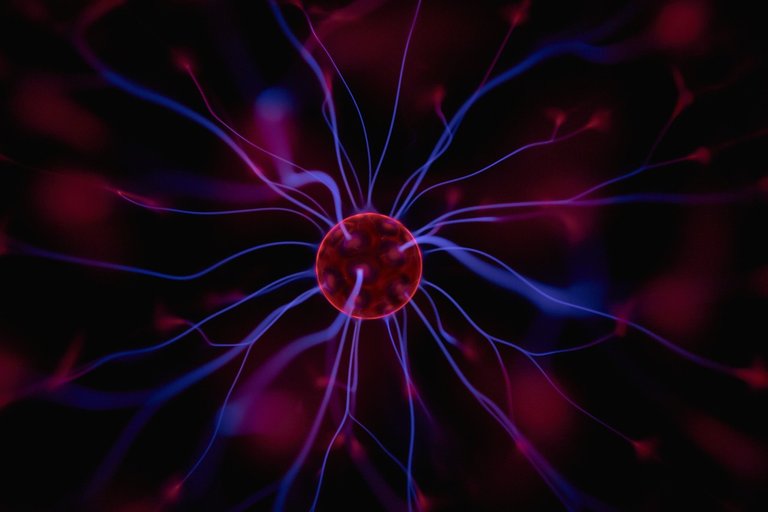Before we discuss what happens if the Sun is replaced by a neutron star, to keep in mind, the Sun will never be a neutron star.

As the Sun gets older, the star that becomes the center of the Solar System will also evolve. Now, the Sun is still in the combustion stage of hydrogen. In 5 billion years, the sun will expand into a red giant and eventually end its life as a cold white dwarf.
Long before the Sun became a white dwarf, life on Earth was extinct or even moved to another planet.
But, let's suppose for a moment. What if the Sun is replaced with a neutron star. Will the Earth and the planets remain as they are today? Before we discuss what happened with the Solar System, how about we get acquainted with the neutron star.
The neutron star is the star that formed at the end of the life of a massive star. Normal stars like the Sun only end up as white dwarfs.
But, a massive star usually ends his life by exploding as a supernova. The outer part will be ejected at the speed of tens of thousands of kilometers per second while the center of the star will collapse into a very compressed object.
During collapse occurs in the center of the star, a very strong force of gravity will continue to pull matter toward the center so that eventually the electrons penetrate the nucleus of protons and neutrons. Protons and electrons join together to form neutrons. As a result, formed a gas which rich neutrons.
In a very compressed condition (very high density), the pressure is also very high. As a result, the neutrons degenerate and give backpressures that stop the shrinking in the center of the star. Ultimately, neutron stars are formed with a diameter of only 20 km. But, its mass is equivalent to the Sun mass, that is 1.4 solar masses. Compare with the Sun 1.4 million km in diameter (and accommodate 1 mass of the Sun). That means all matter is compressed in a very narrow space.
Neutron Star in the Center of the Solar System
The attraction in this neutron star is enormous or about ~ 2 billion times stronger than Earth's gravity.
So, when we replace the neutron star as the center of the Solar System, the planets will be drawn by the gravitational force of a very large neutron star. As a result, the planets are also destroyed and the material is drawn toward the neutron star. Could be, splinter planets in the Solar System destroyed by the pull of this neutron star will form the accretion disk around the star.
The further an object of a neutron star is, of course, the pulling force that affects the object will be weaker. Had the sun replaced with a neutron star, then surely life on Earth would also become extinct.
If what we replace is not a neutron star but a massive star who will become a neutron star then the Solar System will not survive.
The inner planets will get closer to the star whose radius is large, and potentially starved when it evolves into a red giant star. When the star explodes and the center of the star collapses, the explosion will catapult planets from the Solar System.
So that's the fate of the Solar System if the sun is replaced by a neutron star.
Reference :


Hey there, you are not considering something important. What is the mass of your supposed Neutron star? If it is the mass of the Sun then there will be no change in the orbits. You must consider Newtons law of Gravity. The gravitational strength depends on the mass. Only if the mass was much greater would the planets experience a stronger force. You could replace the Sun with a Black hole, if it was a black hole of 1 solar mass then nothing would happen, it would be dark but no change in orbit. The orbits will only change if there is a change in the mass of the solar object.
You must make sure you consider the physics before making points.
Good job on the article, but you must ensure you are stating scientific facts.
:)
Do neutron stars with such a low mass even exist?
Typical Neutron stars can be produced in a type Ia super nova event, the process leaves behind a neutron star with mass about 1.4 Mo, but there are examples of lower mass N-stars as low as 0.5 Mo
http://iopscience.iop.org/article/10.1086/376515
But here it is said that the neutron star has the gravitational field at a neutron star's surface is about 2×1011 times stronger than on Earth, at around 2.0×1012 m/s2.
thanks @physics.benjamin
:)
I want you to get good upvotes @whalhesa, I have corrected you here so that in the future it can help you improve. It's important as scientists to state facts well and consider the physical processes. With this feed back I hope that in the future you will consider more deeply the physical relationships, this way you can learn better and teach others effectively.
this is a new knowledge for me, I do not think there is a neutron star with a mass under the sunthanks @physics.benjamin for your correction.....
:)
They do indeed exists, I found an article quickly to prove so
http://iopscience.iop.org/article/10.1086/376515
The neutron star you refer to is due to a type Ia supernova, this event produces neutron stars with masses about 1.4 solar mass.
If you replaced the Sun with a neutron star of the same mass (1Mo) then there would be absolutely no changed in the orbits. If you replaced it with any stellar object with a different mass then the orbits will change.
The point you made about surface gravity is true, but it's due to the mass being compressed into a smaller volume, so the radius is smaller.
By studying this equation it's clear why this is true.
So this statement is a bit misleading, only if the mass of the neutron star was larger than the sun this statement is kind of true. Neutron stars can have masses as low as 0.5 solar mass.
It's cool dude, just trying to clear up an important point about the physics. I have the Bsc in Astrophysics so I have to use my knowledge somewhere :)
I hope this information helped. :)
Such an event could be happened when the judge day comes. The end is near.
No it couldn't, the Sun can't become a Neutron star. I think you should read the article a bit better.
I read the article thoroughly brother @physics.benjamin and I know it couldn't be happened scientifically. I was commenting in religious perspective as a Muslim.
Peace, Abundance, and Liberty Network (PALnet) Discord Channel. It's a completely public and open space to all members of the Steemit community who voluntarily choose to be there.Congratulations! This post has been upvoted from the communal account, @minnowsupport, by whalhesa from the Minnow Support Project. It's a witness project run by aggroed, ausbitbank, teamsteem, theprophet0, someguy123, neoxian, followbtcnews, and netuoso. The goal is to help Steemit grow by supporting Minnows. Please find us at the
If you would like to delegate to the Minnow Support Project you can do so by clicking on the following links: 50SP, 100SP, 250SP, 500SP, 1000SP, 5000SP.
Be sure to leave at least 50SP undelegated on your account.